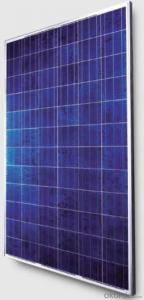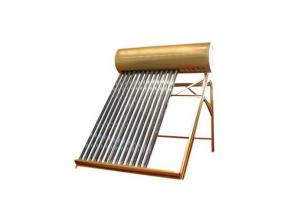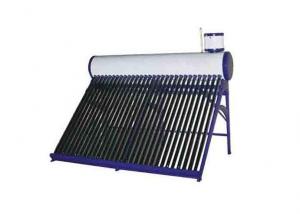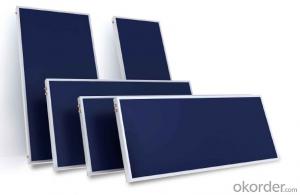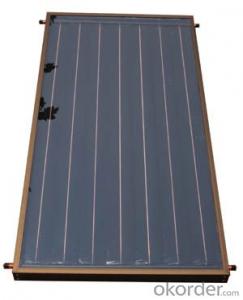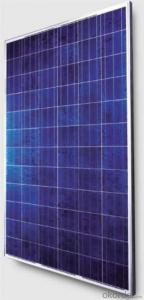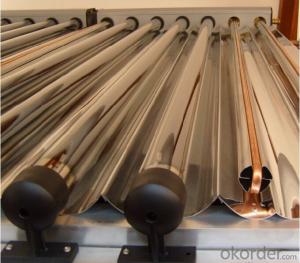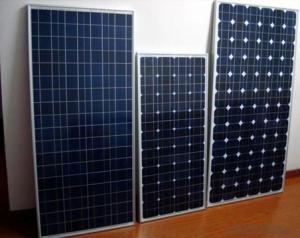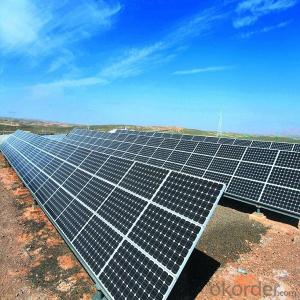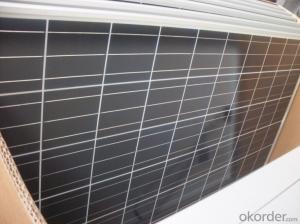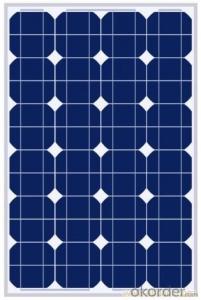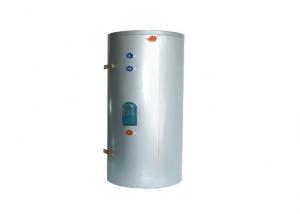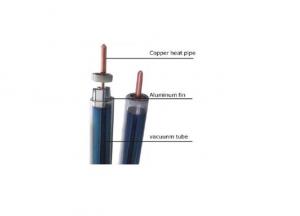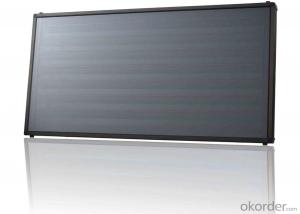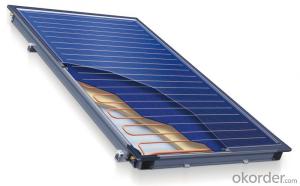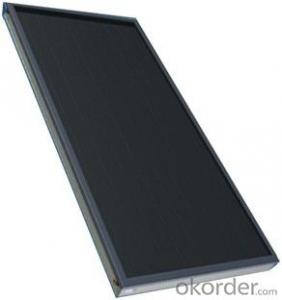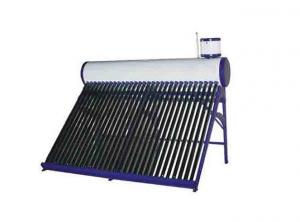S-Power Solar Collectors - Polycrystalline PV Modules Made in China
- Loading Port:
- Tianjin
- Payment Terms:
- TT OR LC
- Min Order Qty:
- 1 pallet
- Supply Capability:
- 100000000 pallet/month
OKorder Service Pledge
OKorder Financial Service
You Might Also Like
Solar panel refers either to a photovoltaic (PV) module, a solar hot water panel, or to a set of solar photovoltaic modules electrically connected and mounted on a supporting structure. A PV module is a packaged, connected assembly of solar cells. Solar panels can be used as a component of a larger photovoltaic system to generate and supply electricity in commercial and residential applications. Each module is rated by its DC output power under standard test conditions, and typically ranges from 100 to 320 watts. The efficiency of a module determines the area of a module given the same rated output – an 8% efficient 230 watt module will have twice the area of a 16% efficient 230 watt module. There are a few solar panels available that are exceeding 19% efficiency. A single solar module can produce only a limited amount of power; most installations contain multiple modules. A photovoltaic system typically includes a panel or an array of solar modules, an inverter, and sometimes a battery and/or solar tracker and interconnection wiring.
Product Description:
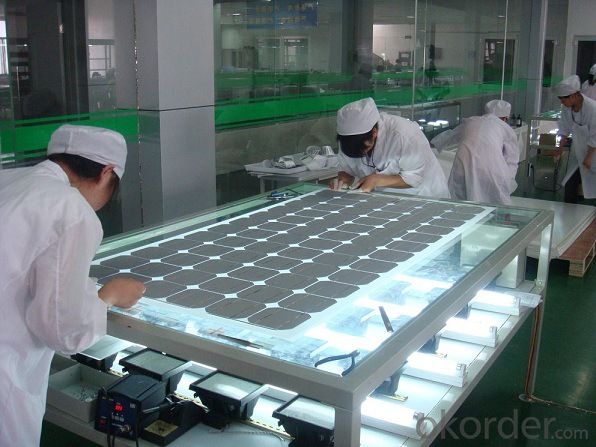
Solar Monocrystalline Series Panels
Introduction of Solar Monocrystalline Series Panels
CNBM Solar photovoltaic (PV) Panel is designed for large electrical power requirements. It is the optimal choice for both on-grid and off-grid power systems. CNBM Solar panel offers high performance of power per square foot of solar array. Monocrystalline silicon(c-Si): often made using the Czochralski process. Single-crystal wafer cells tend to be expensive, and because they are cut from cylindrical ingots, do not completely cover a square solar cell module without a substantial waste of refined silicon. Hence most c-Si panels have uncovered gaps at the four corners of the cells.
Characteristics of Solar Monocrystalline Series Panels
I Solar Cell : High efficiency crystalline solar cell. Even if under the weak light, the solar module can produce maximum power output.
II Tempered glass (toughened glass): Anti-reflecting coating and high transmission rate glass increase the power output and mechanical strength of solar module.
III EVA and TPT: Using high quality EVA and TPT to prevent destroying and water.
IV AI frame: Without screw, corner connection. 6 holes on the frame can be installed easily.
V Junction box: Multi function junction box with water proof.
VI Long lifetime: ≥25 years; Less power decrease
VII Good performance of preventing from atrocious weather such as wind and hails.
VIII Resisting moisture and etching effectively, not effected by geology.
Standard Test Conditions of Solar Monocrystalline Series Panels
The opto-electrical specifications shown below are stabilized values being measured at Standard Test Conditions, Irradiance: 1000W/m2, Spectrum: AM1.5 at 25°C, The info below is subject to manufacturing tolerances. Where appropriate minutes of measurement are available and are used for the dimensioning of the installation.
Advantages of Solar Monocrystalline Series Panels
• CNBM Solar performance guarantees for 25 years
• 12 years guarantee for workmanship
• Timeliness of delivery
CNBM International Corporation's products including Monocrystalline Solar Panel, Polycrystalline Solar Panel have received and enjoyed famous reputation in many countries and regions in the world .As a solar panel supplier in China, we strive to provide our customers with excellent service, superior products and unmatched value.
Characteristics of Solar Monocrystalline Series Panels
Max Power Voltage Vmp (V) | 18.4V | 17.6V |
Max Power Current Imp (A) | 6.52A | 7.39A |
Open Circuit Voltage Voc (V) | 23.0V | 22.2V |
Short Circuit Current Isc (A) | 6.97A | 7.90A |
Max Power Pm (W) | 120W | 130W |
Temperature Coefficient of Cells
NOCT | 47℃±2℃ |
Temperature Coefficients of Isc (%/℃) | 0.064 |
Temperature Coefficients of Voc (%/℃) | -0.33 |
Temperature Coefficients of Pmp (%/℃) | -0.45 |
Mechanical Data Solar Monocrystalline Series
Power | 120W/130W |
Dimension | 1190/1470×670×30mm |
Weight | 9.5kg/11.7kg |
Tolerance | ±3% |
The dimension of the modules can be changed according to the demand of clients
Limits
Operating Temperature | –40 °C to +85°C |
Storage Temperature | –40 °C to +85°C |
Max System Voltage | 700V |
Guarantee Solar Monocrystalline Series Panels
Products Guarantee | 10 yrs free from defects in materials and workmanship |
Performance Guarantee | No less than 90% within 10yrs and no less than 80% within 25yrs |
Certificates | IEC, ISO, TUV, CE |
FAQ
We have organized several common questions for our clients,may help you sincerely:
I..Will you focus on the safety of the goods during transportation?
Yes, Safety of the cargo is the primary element that we would consider on transportation.
II..How would guarantee the quality will meet the requirements of your clients?
Before shipment, we will have inspection for each batch of goods.
III..What certificates do you have?
IEC,UL,TUV,CSA,etc.
IV..Can you do OEM according to clients’ requirements?
Yes, we have our own brand while we can provide OEM service.
In the purchase of product within three working days, We will arrange the factory delivery as soon as possible. The perfect time of receiving is related to the state and position of customers. Commonly 7 to 10 working days can be served.
- Q: How do solar collectors affect carbon emissions?
- Solar collectors are a sustainable and environmentally friendly way to generate electricity or heat by harnessing the power of the sun. By using solar collectors, we can significantly reduce carbon emissions. Traditional energy sources such as coal, oil, and natural gas emit large amounts of carbon dioxide and other greenhouse gases when burned for energy production. These emissions contribute to climate change and air pollution, leading to a range of environmental and health issues. In contrast, solar collectors use sunlight to generate electricity or heat without any direct emissions of greenhouse gases. They convert the sun's energy into usable power, eliminating the need for fossil fuels and reducing our reliance on carbon-intensive energy sources. This helps to mitigate carbon emissions and combat climate change. Moreover, solar collectors have a minimal environmental impact throughout their lifecycle. The production, operation, and maintenance of solar collectors generate very low levels of greenhouse gas emissions compared to conventional energy systems. Additionally, solar energy is a renewable resource, meaning it will never run out, unlike fossil fuels. By adopting solar collectors on a large-scale basis, we can significantly reduce carbon emissions from electricity and heat generation. This transition to clean and sustainable energy sources is crucial for achieving global climate goals and creating a more sustainable future for our planet.
- Q: Can solar collectors be used to generate electricity?
- Yes, solar collectors can be used to generate electricity through the process of converting sunlight into usable electrical energy using photovoltaic cells.
- Q: Can solar collectors be used in areas with limited water supply?
- Yes, solar collectors can be used in areas with limited water supply. Solar collectors primarily rely on sunlight to generate heat or electricity, and water is typically used as a medium for transferring and storing the heat energy. However, there are various types of solar collectors that can operate without water or with minimal water requirements, such as air-based or dry-cooled systems. These alternatives can provide sustainable energy solutions in regions facing water scarcity or limited water resources.
- Q: Can solar collectors be used in automotive manufacturing?
- Yes, solar collectors can be used in automotive manufacturing. Solar collectors are devices that capture sunlight and convert it into usable energy, typically in the form of heat or electricity. In the context of automotive manufacturing, solar collectors can be used to provide renewable energy for various processes and operations. One potential application of solar collectors in automotive manufacturing is in the generation of electricity. Large photovoltaic arrays can be installed on the roofs or surrounding areas of automotive manufacturing facilities to harness solar energy and convert it into electrical power. This electricity can then be used to power various equipment and machinery in the manufacturing process, reducing reliance on traditional energy sources and lowering carbon emissions. Solar collectors can also be utilized for heating purposes in automotive manufacturing. Solar thermal collectors can capture sunlight and convert it into heat, which can then be used for various heating applications such as space heating, water heating, or even heating specific manufacturing processes. This can help reduce the consumption of fossil fuels or electricity for heating purposes, resulting in cost savings and environmental benefits. Additionally, solar collectors can be integrated into the design of electric vehicles (EVs) themselves. Solar panels can be installed on the roofs or other areas of EVs to capture sunlight and generate electricity, which can then be used to power auxiliary systems within the vehicle. While the electricity generated from these on-board solar collectors may not be sufficient to power the entire vehicle, it can help reduce the energy consumption from the main battery and increase the overall efficiency of the EV. In conclusion, solar collectors can certainly be used in automotive manufacturing. Whether it is through the generation of electricity to power manufacturing processes, heating applications, or even as an integrated component in electric vehicles, solar collectors offer a sustainable and renewable energy solution for the automotive industry.
- Q: Can solar collectors be used for generating electricity during winter?
- Yes, solar collectors can be used for generating electricity during winter. While the shorter days and lower sun angles may result in slightly reduced efficiency, solar panels can still generate electricity as long as they receive sunlight. Additionally, advances in technology have improved the performance of solar panels in cold and snowy conditions, making them viable for winter electricity generation.
- Q: Can solar collectors be used for space exploration?
- Indeed, solar collectors can be utilized for space exploration. These devices, also referred to as solar panels or photovoltaic (PV) arrays, have the ability to convert sunlight into electricity. This electricity can then be employed to power the various instruments and systems necessary for space exploration. The use of solar panels in space exploration is particularly advantageous due to the abundance of sunlight in space. Since there is no atmosphere to hinder or obstruct sunlight, solar panels can capture a significant amount of energy. This energy can be stored in batteries or directly utilized to power spacecraft, satellites, rovers, and other space exploration equipment. Solar panels have been extensively employed in numerous space missions. For example, the International Space Station (ISS) relies on solar panels to generate the electricity required for life support systems, communication, and scientific research. Moreover, many satellites and probes, such as the Hubble Space Telescope and Mars rovers like Curiosity and Perseverance, utilize solar panels to fuel their operations. Not only are solar collectors useful for generating electricity, but they also provide thermal energy. In space, solar thermal collectors can be used to heat and cool spacecraft, maintain optimal temperature conditions, and support various experiments that necessitate controlled thermal environments. Additionally, solar collectors possess the advantage of being lightweight and compact, making them ideal for space exploration. They can be easily integrated into spacecraft designs without adding excessive weight or occupying excessive space. This is crucial for launching missions into space, as reducing weight and maximizing payload capacity are paramount. In conclusion, solar collectors are highly suitable for space exploration. They offer a reliable and sustainable source of energy, can be utilized for both electricity generation and thermal control, and possess lightweight and compact characteristics. As our exploration of the universe continues, solar collectors will continue to play a vital role in powering our space missions and expanding our understanding of the cosmos.
- Q: Can solar collectors be used for generating electricity in forests?
- Solar collectors have the ability to generate electricity in forests. Specifically, photovoltaic (PV) panels are designed to convert sunlight into electrical energy. If there is enough sunlight reaching the forest floor, solar collectors can be utilized to capture this energy and produce electricity. Nonetheless, it is crucial to consider the forest canopy's density and height, as excessive shading can greatly diminish the effectiveness of solar collectors. In such situations, strategic planning and placement of the solar collectors may be necessary, such as positioning them in clearings or areas with less shade. Furthermore, regular maintenance and cleaning of the panels may be required to prevent accumulation of fallen leaves, branches, or debris from the forest that can obstruct sunlight absorption. All in all, while forests can indeed be used for electricity generation through solar collectors, it is essential to take into account the specific location and conditions of the forest to ensure optimal efficiency.
- Q: Can solar collectors be used for drying pet products?
- Yes, solar collectors can be used for drying pet products. Solar collectors harness the energy from the sun to produce heat, which can be used to dry various items including pet products such as pet bedding, towels, and even food treats. This eco-friendly and cost-effective method of drying helps to reduce energy consumption and is beneficial for both pet owners and the environment.
- Q: Can solar collectors be used for heating residential complexes?
- Yes, solar collectors can be used for heating residential complexes. Solar collectors, such as solar thermal panels, can capture the sun's energy and convert it into heat that can be used for heating water and space heating in residential complexes. This energy-efficient and sustainable solution can help reduce reliance on traditional heating systems, lower energy costs, and contribute to a greener environment.
- Q: Can solar collectors be installed on a flat roof?
- Yes, solar collectors can be installed on a flat roof.
Send your message to us
S-Power Solar Collectors - Polycrystalline PV Modules Made in China
- Loading Port:
- Tianjin
- Payment Terms:
- TT OR LC
- Min Order Qty:
- 1 pallet
- Supply Capability:
- 100000000 pallet/month
OKorder Service Pledge
OKorder Financial Service
Similar products
Hot products
Hot Searches
